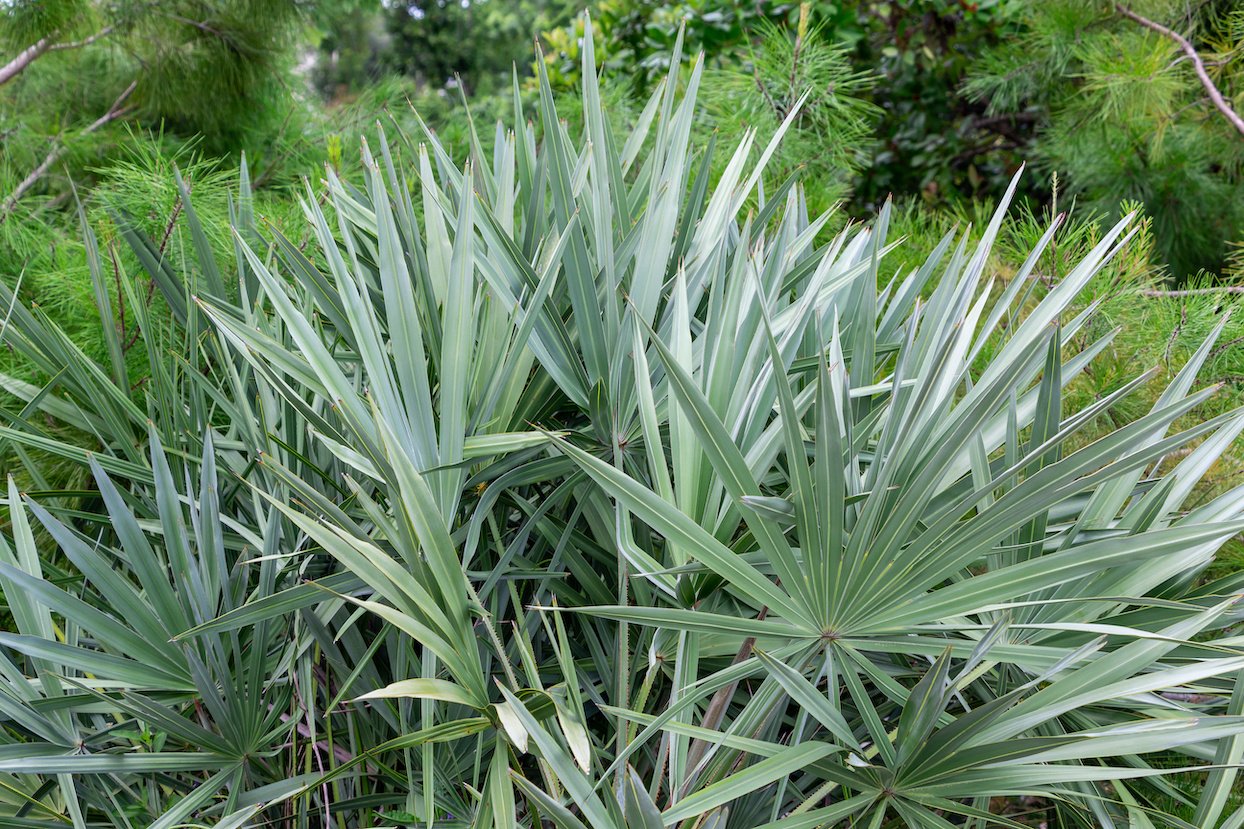Saw Palmetto Silver
The silver saw palmetto is a captivating variation of the classic Florida plant, offering a more ornamental take on this old-fashioned favorite. Hailing from the southeastern United States, the silver saw palmetto is a uniquely colored landscape plant that brings a touch of old-Florida charm to any setting. Whether used as a filler, hedge, backdrop, or accent, these striking plants are quite easy to grow, making them a practical choice for adding visual interest to your outdoor space. With their silvery fronds and compact, bushy form, silver saw palmettos are the perfect addition to a naturalized landscape, infusing it with a touch of timeless elegance.
The silver saw palmetto is a captivating variation of the classic Florida plant, offering a more ornamental take on this old-fashioned favorite. Hailing from the southeastern United States, the silver saw palmetto is a uniquely colored landscape plant that brings a touch of old-Florida charm to any setting. Whether used as a filler, hedge, backdrop, or accent, these striking plants are quite easy to grow, making them a practical choice for adding visual interest to your outdoor space. With their silvery fronds and compact, bushy form, silver saw palmettos are the perfect addition to a naturalized landscape, infusing it with a touch of timeless elegance.
The silver saw palmetto is a captivating variation of the classic Florida plant, offering a more ornamental take on this old-fashioned favorite. Hailing from the southeastern United States, the silver saw palmetto is a uniquely colored landscape plant that brings a touch of old-Florida charm to any setting. Whether used as a filler, hedge, backdrop, or accent, these striking plants are quite easy to grow, making them a practical choice for adding visual interest to your outdoor space. With their silvery fronds and compact, bushy form, silver saw palmettos are the perfect addition to a naturalized landscape, infusing it with a touch of timeless elegance.
Serenoa repens ‘Cinera’
Native: Southeastern United States
Hardiness Zone: 8a, 8b, 9a, 9b, 10a, 10b, 11
Light Range: Full Sun, Part Sun
Soil Characteristics: Loam, Sand
Tolerances: Occasional flooding from storm surges, Wind
Landscape Use: Specimen, mass planting, beds and borders, this plant is very versatile
Height: 5’-7’
Spread: 3’-4’
Growth Rate: Slow
Leaf Size: Fan-shaped up to 5’
Leaf Persistence: Evergreen
Wildlife: The berries are food for birds and other wildlife; Larval host plant for butterflies
Roaming Roots Tips:
We think every landscape should include this native plant.

